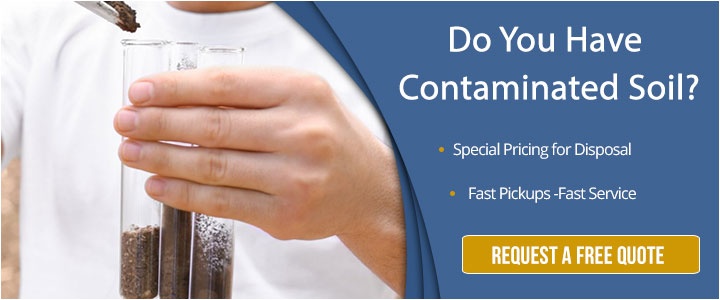False. Soil pollution is typically associated with contaminants such as heavy metals, pesticides, industrial chemicals, and other pollutants that can have harmful effects on the environment and human health. Silver is not commonly considered a major soil pollutant, and dangerous levels of silver in soil are not a typical concern in soil pollution scenarios.
However, it's essential to consider the specific context and sources of pollution in any given situation. Different pollutants may have different impacts and pathways of entering the soil. For example, industrial activities might introduce heavy metals like lead or mercury into the soil, while agricultural practices could contribute to pesticides or fertilizers.
Understanding the sources helps assess potential risks and implement appropriate remediation measures. In the case of silver, while it is not a common soil pollutant, certain industrial processes or localized activities (such as silver mining or manufacturing) could potentially lead to elevated silver levels in the soil. However, it's not typically a widespread concern compared to other more common soil pollutants.
The Misconception About Silver
Because silver is a metal, it can be easy to assume that soil pollution can result in dangerous levels of silver. After all, if.png?width=300&height=251&name=Untitled%20design%20(100).png) silver-containing industrial waste or products are improperly disposed of or if silver mining and manufacturing activities release significant amounts of silver into the environment, there is a potential for elevated silver levels in the soil, leading to concerns about environmental contamination and potential health risks.
silver-containing industrial waste or products are improperly disposed of or if silver mining and manufacturing activities release significant amounts of silver into the environment, there is a potential for elevated silver levels in the soil, leading to concerns about environmental contamination and potential health risks.
However, silver is generally considered to be safe for humans when used in appropriate amounts and forms. In fact, silver has been used for various purposes throughout history, including in medicine and as an antimicrobial agent. Silver has antibacterial and antifungal properties, which is why it has been used in wound dressings, medical devices and even in some water purification systems.
However, excessive exposure to silver can lead to a condition called argyria, where the skin and mucous membranes turn a bluish-gray color. Argyria is a rare condition and is typically associated with prolonged exposure to high levels of silver, often through the consumption of colloidal silver supplements. Colloidal silver consists of tiny silver particles suspended in a liquid and is sometimes marketed as a health supplement, but its safety and efficacy are a subject of controversy.
In general, the use of silver in everyday items, such as jewelry or silverware, is not considered harmful as the amounts involved are typically minimal. While localized activities like silver mining could potentially lead to elevated silver levels in the soil, this threat is not typically a widespread concern compared to other more common soil pollutants.
The Bigger Threats In Soil Pollution
Heavy metals stand out as significant contributors to soil pollution, with elements like lead, mercury, cadmium and arsenic posing substantial threats to both the environment and human health. These metals often infiltrate the soil through industrial processes, mining activities, agricultural practices and improper waste disposal.
The repercussions of exposure to elevated levels of heavy metals are severe, with lead linked to neurological and developmental issues, mercury causing harm to the nervous system, cadmium accumulating in the kidneys and leading to damage, and arsenic exposure associated with various cancers.
Beyond human health, heavy metals can persist in the soil for extended periods, leaching into water sources, impacting aquatic ecosystems, and accumulating in plants, thereby affecting the entire food chain.
In addition to heavy metals, the widespread use of pesticides, herbicides and fertilizers in agriculture contributes significantly to soil contamination. These agrochemicals, designed to boost crop productivity, can have adverse effects on soil quality and broader ecosystems. Pesticides, in particular, pose risks to human health and non-target organisms, with some being persistent and capable of long-term ecological disruptions.
Even plastic pollution can impact soil quality and extend beyond marine environments, with microplastics resulting from the breakdown of larger plastic items accumulating in soils. The consequences of microplastic presence in soil, including potential impacts on soil structure, nutrient cycling, and soil-dwelling organisms, are still not fully understood.
Addressing soil pollution requires a holistic approach, encompassing sustainable agricultural practices, proper waste disposal methods, and stricter regulations on industrial activities. Combating the threats posed by heavy metals, pesticides, industrial pollutants, and emerging concerns like plastic pollution is essential for preserving soil health, biodiversity and the overall well-being of ecosystems and communities.
Mitigating Soil Pollution
Effective hazardous waste management plays a crucial role in mitigating the threats posed by heavy metals and other pollutants, as well as ensuring the preservation of soil health.
Hazardous waste management involves the proper containment and disposal of pollutants, especially from industrial activities. This is essential to prevent the release of harmful substances into the soil. Industries must adhere to strict regulations governing the disposal of hazardous waste, reducing the risk of soil contamination and subsequent environmental and health hazards.
Many times, project managers will discover they have contaminated sites through soil testing. Unknown to them at first, managers must now act fast to put into place a plan that remediates the contaminated sites.
Technologies like soil washing, bioremediation and thermal treatment can be employed to clean and restore contaminated soils. Remediation plans may also include transporting the contaminated soil to the appropriate site where it can be safely disposed of. This contaminated soil disposal process involves utilizing secure containment methods, choosing appropriate transportation routes, and adhering to regulatory guidelines to ensure that contaminated soil is safely transported to designated disposal or treatment facilities.
While silver typically isn’t the cause of soil pollution, except in rare circumstances, there are many contaminants that can cause dangerous levels, from heavy metals to pesticides. This highlights the critical importance of comprehensive environmental management practices to safeguard soil quality and protect ecosystems and human health.


Comment